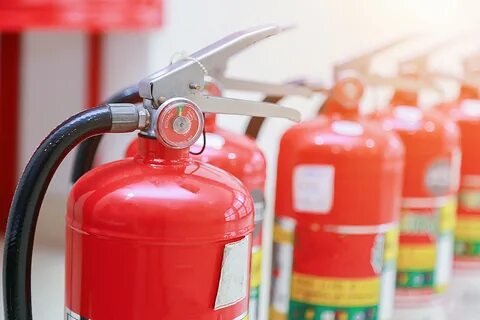Ultimate Fire Extinguisher Tips and Tricks for Safe and Effective Use

Introduction
Fire extinguishers are essential tools for preventing small fires from becoming big disasters. Knowing how to use them properly can make the difference between a minor incident and a major catastrophe. This guide provides ultimate tips and tricks for using fire extinguishers safely and effectively, ensuring that you are prepared to act swiftly in an emergency.
1. Understanding the Types of Fire Extinguishers
Different Classes for Different Fires: Fire extinguisher are categorized into classes based on the type of fire they are designed to combat. The most common classes are A, B, C, D, and K. Class A is for ordinary combustibles like wood and paper, Class B for flammable liquids, Class C for electrical fires, Class D for flammable metals, and Class K for cooking oils and fats. Understanding these classes is crucial for selecting the right extinguisher in an emergency.
Multi-Purpose Extinguishers: Some fire extinguishers are multi-purpose and can handle more than one class of fire. For example, an ABC extinguisher can be used on Class A, B, and C fires, making it a versatile option for home and office use. Having a multi-purpose extinguisher ensures that you are equipped to deal with various types of fires with a single tool.
2. Knowing When and How to Use a Fire Extinguisher
Assessing the Situation: Before using a fire extinguisher, it’s important to assess the situation. If the fire is small and contained, using an extinguisher is appropriate. However, if the fire is spreading rapidly, evacuate immediately and call the fire department. Never attempt to fight a fire that is too large, as it can be dangerous.
The PASS Technique: The PASS technique is an easy way to remember how to use a fire extinguisher effectively. PASS stands for Pull, Aim, Squeeze, and Sweep. Pull the pin to unlock the extinguisher, Aim the nozzle at the base of the fire, Squeeze the handle to release the extinguishing agent, and Sweep the nozzle from side to side until the fire is out. Practicing this technique can help you act quickly in an emergency.
3. Regular Maintenance and Inspection
Check the Pressure Gauge: Fire extinguishers have a pressure gauge that indicates whether the extinguisher is ready for use. The needle should be in the green zone, which means it’s fully charged. If the needle is in the red zone, the extinguisher needs to be serviced or replaced.
Inspect for Physical Damage: Regularly inspect your fire extinguisher for any signs of physical damage, such as dents, rust, or corrosion. Ensure that the hose and nozzle are clear of obstructions and that the safety pin is intact. A damaged extinguisher may not work properly in an emergency, so it’s essential to keep it in good condition.
4. Proper Storage and Accessibility
Location Matters: Fire extinguishers should be stored in easily accessible locations where they are visible and can be quickly reached in an emergency. Common places include kitchens, garages, and near exits. Avoid storing extinguishers in areas where they could be obstructed or difficult to reach.
Mounting and Signage: Mount your fire extinguisher on a wall using the proper bracket to keep it secure and easily accessible. Ensure that there is clear signage indicating the location of the extinguisher, especially in larger buildings where it may not be immediately visible. Proper mounting and signage can save valuable time during a fire emergency.
5. Training and Familiarization
Hands-On Training: Everyone in your household or workplace should be familiar with how to use a fire extinguisher. Conduct hands-on training sessions where individuals can practice using an extinguisher. This training can build confidence and ensure that people are prepared to act quickly if a fire occurs.
Understanding Limitations: It’s important to understand that fire extinguishers have limitations. They are designed to put out small fires and may not be effective against larger, more dangerous fires. Educating everyone on when to use an extinguisher and when to evacuate is crucial for safety.
6. Legal and Safety Compliance
Follow Local Regulations: Fire extinguisher maintenance and usage are often governed by local safety regulations. Make sure you are aware of these regulations and comply with them to avoid legal issues. Regularly check if your fire extinguishers meet the required standards and are properly certified.
Proper Disposal: When a fire extinguisher reaches the end of its life, it must be disposed of properly. Do not throw it in the regular trash, as it may contain hazardous materials. Instead, take it to a designated recycling center or follow local guidelines for disposal. Proper disposal is important for environmental safety.
Conclusion
Fire extinguishers are powerful tools for protecting lives and property, but they must be used correctly to be effective. By understanding the different types of extinguishers, practicing the PASS technique, maintaining and inspecting your extinguisher regularly, and ensuring proper storage and accessibility, you can be prepared to handle small fires safely. Regular training and compliance with safety regulations further enhance your readiness, making you confident in your ability to act quickly and effectively in an emergency.






